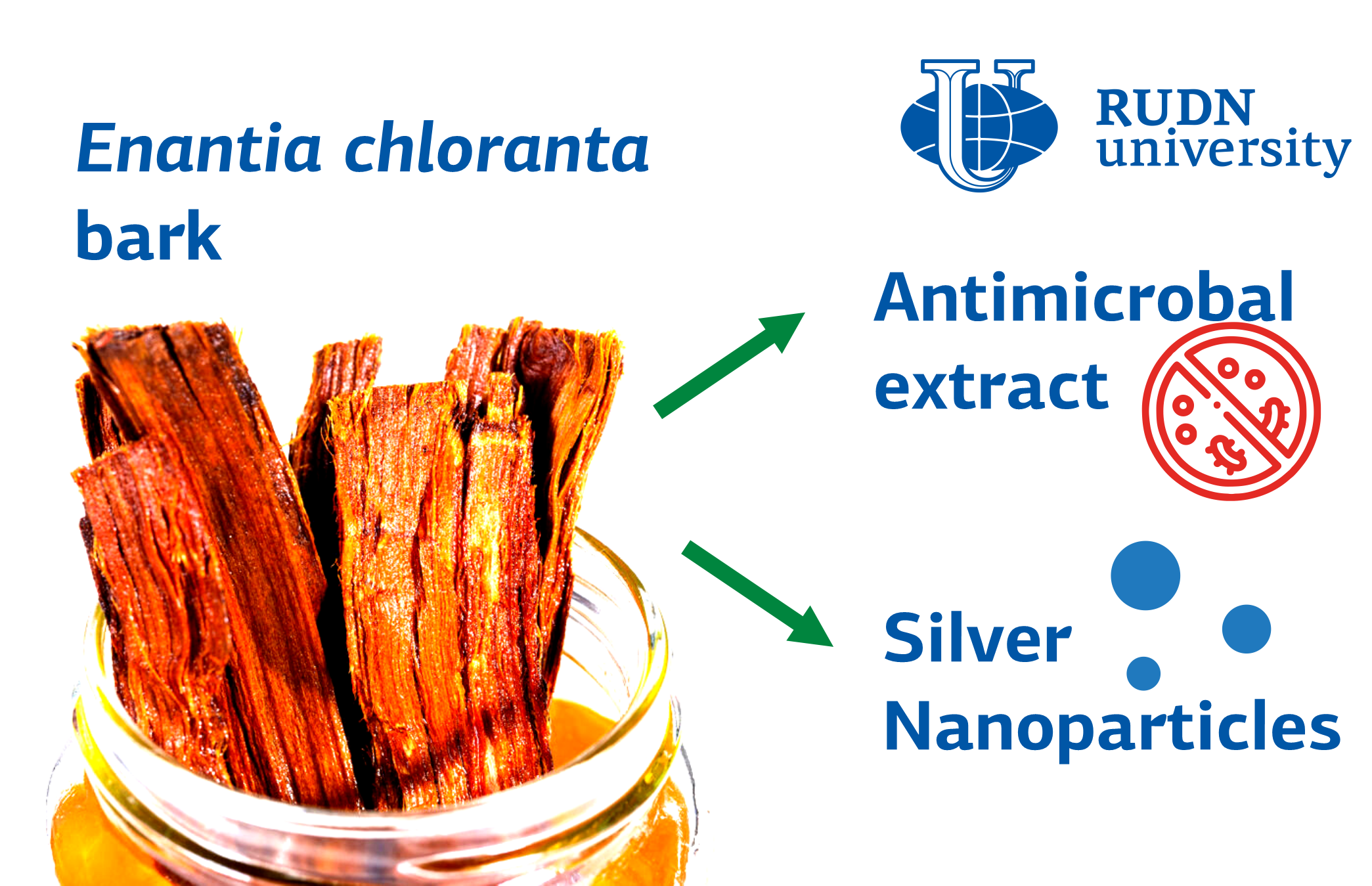RUDN microbiologists receive antimicrobial drugs from the bark of an African tree
African tree Enantia chloranta is known in folk medicine for its anti-inflammatory and antibacterial properties. It grows mainly in Cameroon and other countries in central Africa. It is still used in cosmetology today. However, unlike other similar plants, Enantia chloranta is still not studied in terms of biochemistry. RUDN University biologists noticed that the enantia can become an environmentally friendly source of silver nanoparticles, the antibacterial properties of which have long been used. RUDN biologists for the first time fully studied the biochemical composition of the enanthia bark extract, obtained silver nanoparticles from it and tested their action against bacteria.
“In recent years, interest in silver nanoparticles has increased . They are used in various fields, including medicine and nutrition, due to their unique physical and chemical properties. The synthesis of silver nanoparticles is usually carried out chemically or using microwave processing, electron irradiation, lasers. However, these methods are increasingly being replaced by more environmentally friendly approaches. Nanosilver can be obtained using microorganisms, enzymes and plant extracts. So, some plants, medicinal and ordinary, are already used for this. However, very few works are devoted to the use of enantia for this”, — Mbarga Joseph Arsen, assistant of the Department of Microbiology and Virology, RUDN University.
Microbiologists used freshly harvested enanthia bark. It was dried at room temperature for 7 days and then sent to the laboratory. There, a number of phytochemicals were obtained from the bark and their composition was determined. Also, with the help of an extract from the bark and a solution of silver nitrate, RUDN University biochemists obtained silver nanoparticles. The effect of the obtained substances was tested on 22 types of bacteria.
The bark extract in different concentrations was able to destroy 6 types of bacteria, including Staphylococcus aureus and E. coli. Silver nanoparticles obtained using the extract proved to be effective against all studied bacteria with approximately the same efficiency.
“For the first time, we have optimized the extraction of phytochemicals from the bark of enanthia, studied the composition, carried out a green synthesis of silver nanoparticles. Our results provide a solid experimental basis on which to consider the enantium bark and nanosilver obtained with its help as powerful antimicrobial compounds. This is especially important given the growing resistance to antimicrobials,” Mbarga Joseph Arsen, Assistant Professor, Department of Microbiology and Virology, RUDN University.
The results are published in Fermentation.
Sergey Ivanov, a scholar from St. Petersburg, has been named the first winner of RUDN University’s International Prize for Scientific Achievements in Mathematics, worth 5 million rubles.
Products derived from microalgae represent a cutting-edge development in the field of bioeconomy. The potential of this biological resource was discussed at the international research seminar “Foundations for a Green Sustainable Energy”, part of the BRICS Network University’s thematic group on “Energy”. The event was organized by the Institute of Ecology at RUDN University.
Ambassadors of Russian education and science met at a conference in RUDN University to discuss how they can increase the visibility of Russian universities and research organizations in the world, and attract more international students in Russia.
